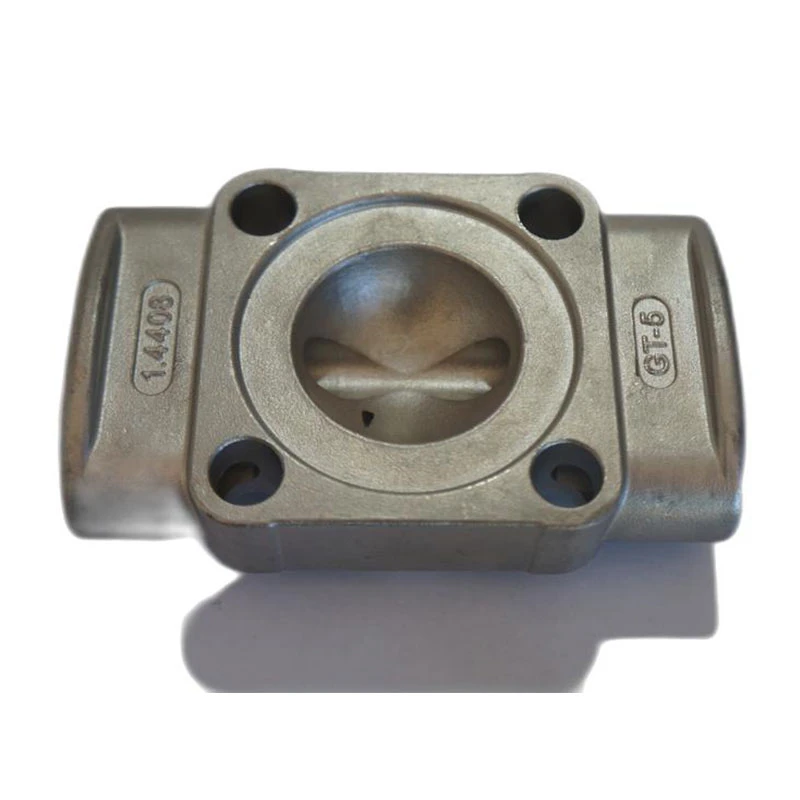auto parts carbon steel investment precision casting manufacturer
The Significance of Carbon Steel in Precision Casting for Auto Parts Manufacturing
In the dynamic landscape of the automotive industry, precision casting has emerged as a pivotal manufacturing technique, enabling the production of complex components with high accuracy and excellent surface finishes. Among various materials, carbon steel stands out as a primary choice for fabricating auto parts due to its remarkable strength, versatility, and cost-effectiveness. This article delves into the role of carbon steel in precision casting, highlighting its benefits, applications, and the manufacturing process involved.
Understanding Precision Casting
Precision casting, often referred to as investment casting, is a process that allows for the creation of intricate metal parts by pouring molten metal into a pre-shaped mold. This method is particularly beneficial for producing components that require fine tolerances and detailed geometries. The casting process begins with the formation of a wax pattern, which is coated in a refractory material to create a mold. Once the mold is set, the wax is melted away, leaving a cavity into which molten metal, such as carbon steel, is poured.
Why Choose Carbon Steel?
Carbon steel is an alloy made primarily of iron and carbon, with varying amounts of other alloying elements. The primary reasons for choosing carbon steel in precision casting for auto parts include
1. Strength and Durability Carbon steel exhibits excellent tensile strength, enabling it to withstand significant loads and stresses, making it ideal for high-performance automotive applications.
2. Wear Resistance The hardness of carbon steel makes it resistant to wear, which is crucial for components subjected to friction and abrasion, such as gears and drive shafts.
3. Cost-Effectiveness Compared to other alloys, carbon steel is relatively inexpensive, offering manufacturers a cost-effective solution without compromising on quality.
4. Machinability Carbon steel can be easily machined and welded, allowing for the creation of complex parts that can be further processed or assembled.
5. Versatile Properties By adjusting the carbon content and adding other elements, manufacturers can tailor the properties of carbon steel to meet specific requirements of different automotive applications.
Applications in Auto Parts Manufacturing
The versatility of carbon steel in investment casting makes it suitable for a wide range of automotive parts, including
auto parts carbon steel investment precision casting manufacturer

- Engine Components Carbon steel is used to manufacture critical engine parts like cylinder heads, valves, and pistons, where strength and durability are essential for engine efficiency and performance
.- Transmission Parts The casting process allows for the creation of intricate shapes in transmission components such as gears, housings, and shift forks, which require precise tolerances for smooth operation.
- Suspension Components Parts like control arms and knuckles benefit from carbon steel's strength and wear resistance, essential for the safe handling and stability of vehicles.
- Exhaust Components Carbon steel’s ability to withstand high temperatures makes it suitable for exhaust manifolds and other exhaust system parts.
The Manufacturing Process Step by Step
The investment casting process for carbon steel auto parts involves several steps
1. Pattern Creation A wax or polymer pattern that replicates the desired part is created.
2. Mold Formation The pattern is coated with a ceramic shell or investment material, which is then heated to harden and remove the wax.
3. Pouring Molten carbon steel is poured into the prepared mold under controlled conditions to ensure uniformity and avoid defects.
4. Cooling The metal cools and solidifies, forming the final part.
5. Finishing After removing the mold, the casting undergoes machining, cleaning, and surface treatment to achieve the required specifications.
Conclusion
The integration of carbon steel in precision casting represents a significant advancement in automotive manufacturing. Its unique combination of strength, wear resistance, and cost-effectiveness makes it an ideal material for producing high-quality auto parts. As manufacturers continue to evolve with innovative casting techniques and technologies, carbon steel will undoubtedly play a pivotal role in shaping the future of the automotive industry, ensuring safety, performance, and efficiency in vehicles.
-
Precision Sheet Metal Stamping Manufacturer | Fast & ReliableNewsAug.01,2025
-
OEM Sand Cast Pump Valve Fittings - Baoding Hairun Machinery And Equipment Trading Co., Ltd.NewsAug.01,2025
-
Custom OEM Impellers | High Efficiency & PrecisionNewsAug.01,2025
-
OEM Sand Cast Pump Valve Fittings - Baoding Hairun Machinery | Customization, Quality AssuranceNewsAug.01,2025
-
OEM Sand Cast Pump Valve Fittings - Baoding Hairun Machinery And Equipment Trading Co., Ltd.NewsAug.01,2025
-
OEM Sand Cast Pump Valve Fittings - Baoding Hairun Machinery And Equipment Trading Co., Ltd.NewsJul.31,2025















